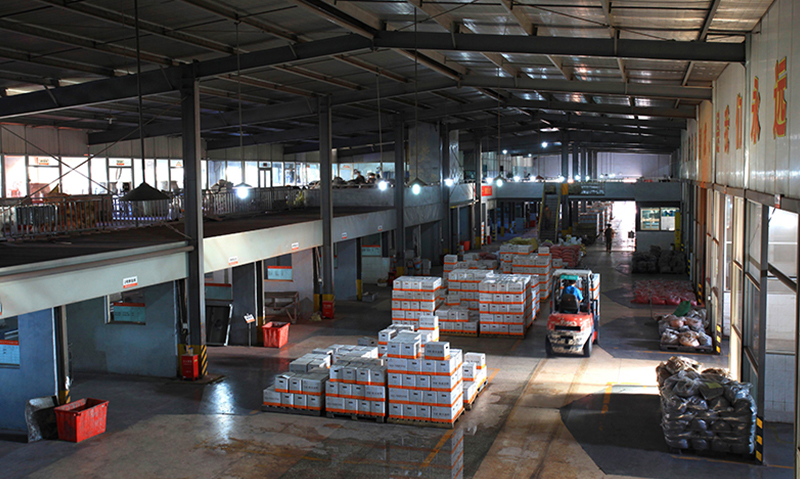Basics of color
Color is a kind of perception of the nerve of the human eye after being stimulated by the radiant energy of a certain wavelength and intensity of an object. Although the colors vary widely, there are only three basic colors of red, yellow and blue, which are usually called the three primary colors. , the two primary colors are mixed with each other in equal amounts to form a secondary color (secondary color), and the secondary color and the primary color are mixed with each other in equal amounts to become a complex color,
Mixing the three primary colors of red, yellow and blue in equal amounts will turn into black. As a powder coating colorist, you must master these basic knowledge.
Generally, a pigment is determined by three parameters: hue, saturation, and lightness, also known as the three elements of color.
Hue: refers to the color difference between different colors such as red, yellow, blue, etc., which determines the perception of the human eye by the spectral composition of the light source and the ratio of the various wavelengths of radiation reflected (or transmitted) on the surface of the object.
Brightness (also known as brightness), refers to the difference between the light and dark of the color, it is the bright feeling of the human eye to the object, the general hand viewing angle receptivity and the influence of past experience, the higher the reflectivity of the object, the brighter it is. high.
Saturation (also known as purity), refers to the degree of saturation of color, sometimes called chroma, that is, the color purity expressed on the basis of hue, each monochromatic light of visible light is a more saturated color, when these pigments The more white light is doped into the medium, the less saturated it is, the worse the reflection selectivity of light waves, and the stronger and more saturated the selectivity of light waves.
A single color without adding other colors is a solid color, and adding other colors becomes a secondary color or a complex color. When two workpieces of the same color are illuminated by different lights or sunlight, the two objects show different colors and shades of light. , this is the nature of brightness, and the color of a certain hue has strengths and weaknesses, which is the difference in saturation.
Toning is the knowledge that every technician must have. The three elements of color can be used to distinguish the difference of colored powder coatings, that is, only when the three characteristic values of hue, brightness and saturation of two colors are the same, the two Only two colors can be exactly the same. If one of the parameters is not equal, the two colors are inconsistent.
Tinting Tips for Powder Coatings
Pigments for
powder coatings can usually be classified according to different ways of production method, composition structure, function, etc.:
Pigments by production method
According to the production method, it can be divided into natural pigments and synthetic pigments. Among the natural pigments, such as ingot blue, there are few natural pigments generally used in powder coatings, while the synthetic pigments include titanium dioxide, iron oxide series pigments, phthalocyanine series, and even pigments. Nitrogen pigments, polycyclic pigments, etc.

Functional distinction
According to the function in powder coatings, it can be divided into coloring pigments, extender pigments (also called fillers), anti-rust pigments, conductive pigments, etc. For most functional powder coatings, the application of functional fillers is very important.
By chemical composition
Pigments for powder coatings can be divided into inorganic and organic components according to their chemical composition. In inorganic pigments, titanium dioxide, zinc oxide, iron oxide series, molybdenum-chromium series, aluminum pigments, metal pigments, etc., and organic pigments such as phthalocyanine series , azo series, polycyclic pigments, etc.
Hue in powder coating tinting process
Pigments used in powder coatings show different hues due to factors such as the chemical composition, crystal structure, surface state, particle size, process and equipment of the pigment. For example, carbon black is a widely used pigment in powder coatings. As the diameter decreases or the surface increases, the blackness of carbon black increases, absorbs more light, and reflects less, making it appear darker. Some merchants may also encounter the problem that no matter how black is adjusted, it is not "black", which is the hue problem!
It is very important to understand the color toning of powder coatings. For example, if the adjustment is exactly the same as the sample, it is set to 10 (it means very satisfied, no need to add any more colorant), then it is easier for us to do the process from 0 to 9. From 9 to 10, it is very difficult to adjust to the later stage, no pigment is needed, only the hue is missing. In addition, regardless of the domestic and foreign pigments, there are different degrees of hue and batch difference, and the production process of powder coatings It is not easy to control, so a certain range of color difference is also allowed in general customers.
brilliance of color
Inorganic pigments usually have good gloss and color retention and low cost, but the pigments are darker (that is, not bright) and have low tinting strength, while organic pigments usually have bright colors, high tinting strength, high cost, and poor gloss and color retention. Of course, the light fastness of some large company-colored organic pigments is above 7 (light fastness 1-8, 8 is the higher level), and the weather resistance is above 4 (weather resistance 1-5, 5 is the higher level), but The price is extremely expensive, so the price of powder made of this pigment is also high.
According to the gorgeousness of the color sample, combined with the price and cost, debug the standard color formula
